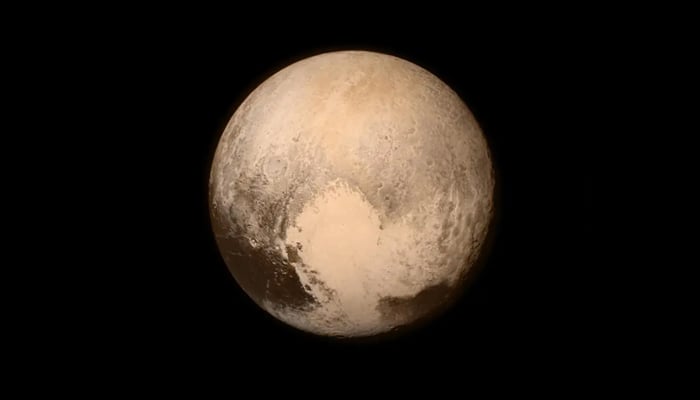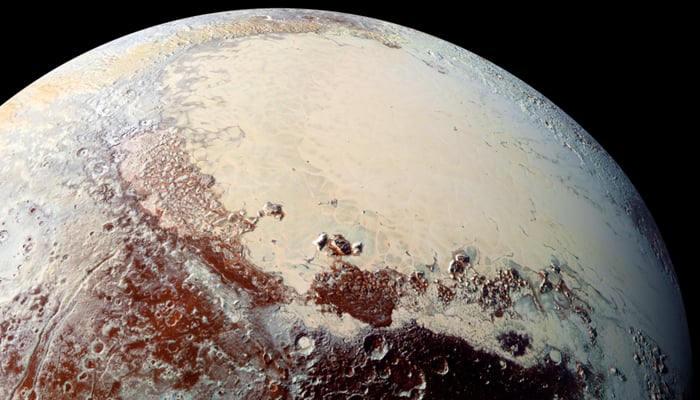Scientists solve mystery about Pluto
Some planetary body may have collided with Pluto
April 22, 2024

Since Nasa's New Horizon spacecraft captured an image of our solar system’s dwarf planet in 2015, astronomers said that they have finally resolved the mystery surrounding the heart shape on Pluto's surface.
The feature on Pluto has been named Tombaugh Regio, honouring astronomer Clyde Tombaugh, who discovered the celestial body in 1930.
Scientists have been trying to understand more about the evolution, geological composition, and other properties of Pluto.
The left lobe of the heart is called Sputnik Planitia which is a deep basic, full of nitrogen ice.
The basin is estimated to cover 745 miles by 1,242 miles — 1.9 to 2.5 miles (3 to 4 kilometres) lower in elevation than the majority of the planet’s surface, reported CNN.

On the right side, there is also nitrogen but thinner.
According to findings published in the journal Nature Astronomy, the heart was created by a cataclysmic event, suggesting that some planetary body may have collided with Pluto in history at a slanted angle.
A study author Dr Harry Ballantyne, and a research associate at the University of Bern in Switzerland, said: "Pluto’s core is so cold that the [rocky body that collided] remained very hard and did not melt despite the heat of the impact, and the core of the impactor did not sink into Pluto’s core, but remained intact as a splat on it."
"Somewhere beneath Sputnik is the remnant core of another massive body, that Pluto never quite digested," a coauthor Erik Asphaug, professor at the University of Arizona’s Lunar and Planetary Laboratory, said.
The findings underlined that the shape of Sputnik Planitia is because of the frigidity of Pluto’s core, and the relatively low velocity of the impact, as the velocity in the distant solar system.









